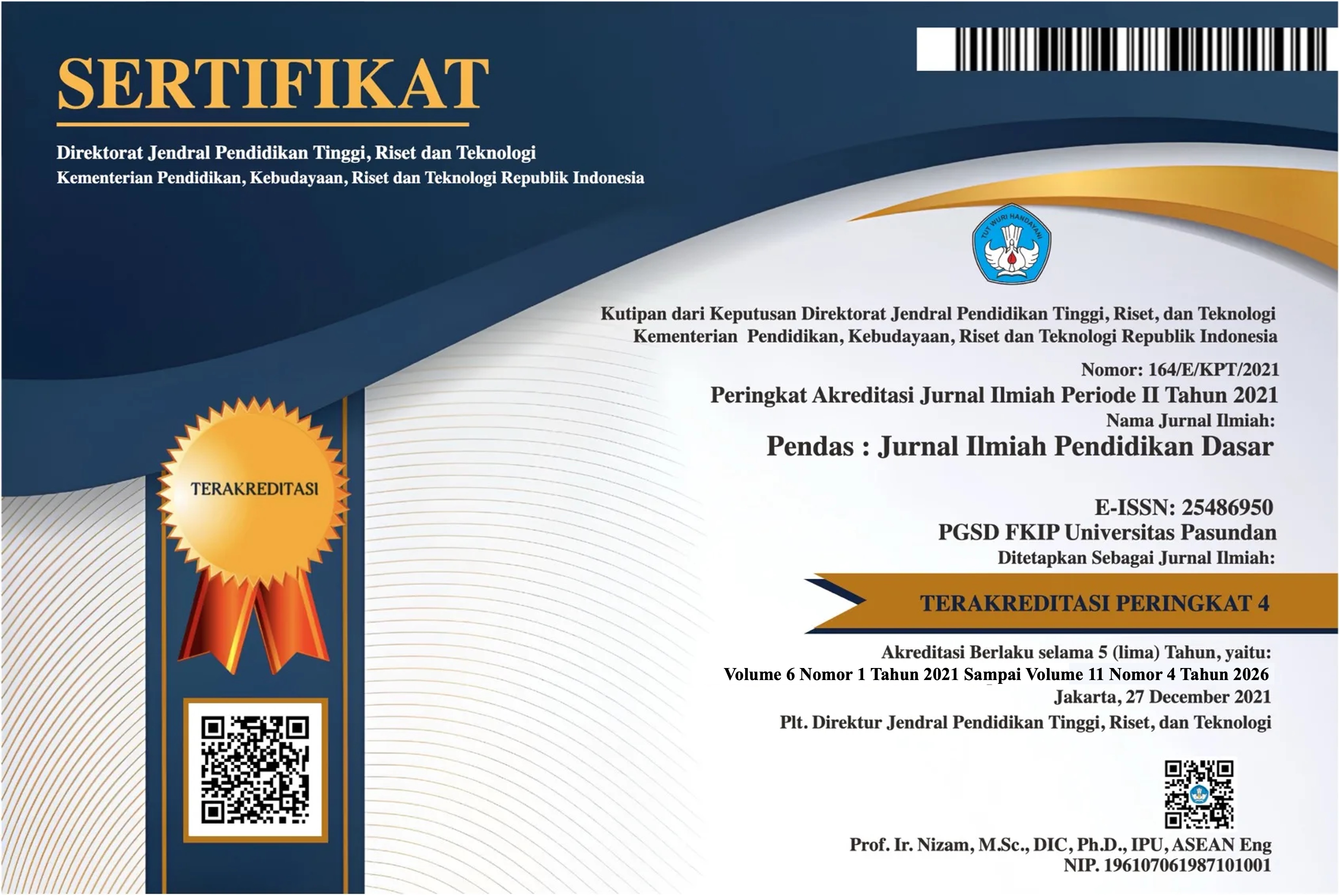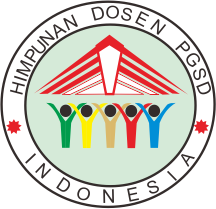EFEKTIFITAS MODEL PROBLEM BASED LEARNING BERBASIS MEDIA DIGITAL UNTUK MENINGKATKAN MOTIVASI BELAJAR IPAS SISWA KELAS IV SDN TEGOWANUH
DOI:
https://doi.org/10.23969/jp.v9i03.16244Keywords:
problem based learning (PBL) model, digital media, learning motivationAbstract
This study aims to determine the effectiveness of Problem Based Learning (PBL) model based on digital media in increasing the learning motivation of fourth grade students of SDN Tegowanuh. This research was conducted in two cycles, with each cycle consisting of four stages: planning, action, observation, and reflection. The subjects of the study were fourth grade students of SDN Tegowanuh, totaling 17 students. Data on students' IPAS learning motivation were collected through questionnaires. The data analysis technique used was descriptive statistics. Based on the results of data analysis, in cycle I, the average student's science learning motivation after participating in learning by applying the digital media-based Problem Based Learning learning model was 140 and was in the high category. The percentage of classical completeness is 82%. In cycle II, the average learning motivation of IPAS students increased to 150 and was in the very high category. The percentage of classical completeness is 94%. This shows that the PBL model based on digital media is effective in increasing the learning motivation of fourth grade students of SDN Tegowanuh.
Downloads
References
Tony Fieldman.(2003).An Introduction to Digital Media:London. https://doi.org/10.4324/9780203398401
I Putu Perdana , Tience Debora Valentina.(2022). Faktor-Faktor yang memengaruhi Motivasi Belajar Siswa Sekolah Dasar:Jurnal Ilmiah Indonesia.
Vol. 7 No. 12
CKBP Angin,T Juwitaningsih .(2023 ).
Pengaruh Penerapan Model Pembelajaran PjBL Berbantuan Media Digital Flipbook terhadap Minat dan Hasil Belajar SiswaJurnal Pendidikan Sosial dan Humaniora.
Dewantara, D. (2014). Penerapan Model Pembelajaran Problem Based Learning Untuk Meningkatkan Aktivitas Dan Hasil Belajar Siswa Pada Pelajaran IPA (Studi Pada Siswa Kelas V SDN Pengambangan 6 Banjarmasin). Jurnal Paradigma. Volume 11 Nomor 2 Juli 2016, 41 - 44.
Fernanda Shella Elvira.(2020) Efektifitas Model Problem Based Learning Berbantuan Media Animasi Terhadap Keterampilan Berbicara Dan Hasil Belajar. Jurnal Ilmiah Pendidikan dan Pembelajaran. Volume 4 nomor 3
Huda, M. (2014). Cooperative Learning:Metode, Teknik, Struktur, dan Model Penerapan. Yogjakarta: Pustaka Pelajar.
Larasati, N., Susongko, P., & Isnani. (2017). Model Pembelajaran Problem Based Learning dengan Metode Discovery Learning terhadap Aktivitas dan Hasil Belajar Siswa. Jurnal Pendidikan MIPA Pancasakti, 1(1), 35–42.
Muhson, Ali. 2009. Peningkatan Minat
Belajar Dan Pemahaman Mahasiswa Melalui Penerapan Problem Based Learning. Jurnal Kependidikan. Vol. 39, No. 2, Hal. 171-182.
Muhasim, M. (2017). Pengaruh Tehnologi Digital terhadap Motivasi Belajar Peserta Didik. PALAPA, 5(2), 53-77.
NA Caesariani.(2018) .Pemanfaatan
Multimedia Interaktif pada Model Problem Based Learning (PBL) dalam Pembelajaran Matematika.
Jurnal Pendidikan Tambusai. Vol 2 no 2.
Ni Putu Suari .(2018).Penerapan
Model Pembelajaran Problem Based Learning untuk Meningkatkan Motivasi Belajar IPA. Jurnal Ilmiah Sekolah Dasar
Volume 2, Number 3, Tahun 2018, ( 241-247)
Permendikbud 2015. Kerangka Dasar Kurikulum dan Struktur Kurikulum Sekolah Dasar. Jakarta: Depdikbud.
Rahmawati, L., et al. (2020).Efektifitas
model problem based learning
Berbantuan media animasi terhadap keterampilanBerbicara dan hasil belajar. Jurnal Ilmiah Pendidikan (Universitas PGRI Semarang) , 2615-6091.
Wibowo, A. (2022). Efektifitas
model problem based learning pembelajaran ipa terhadap minat siswa kelas v sd:Prosiding webinar nasional PGSD UST. Vol. 1 No. 1 (2022)
Downloads
Published
Issue
Section
License
Copyright (c) 2024 Pendas : Jurnal Ilmiah Pendidikan Dasar

This work is licensed under a Creative Commons Attribution 4.0 International License.


















